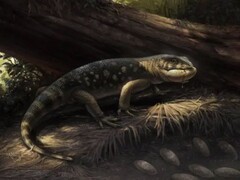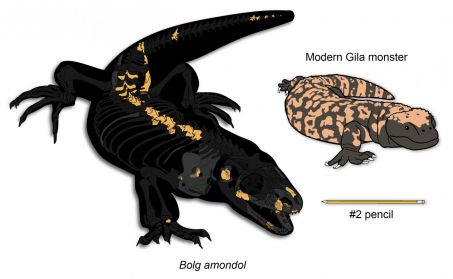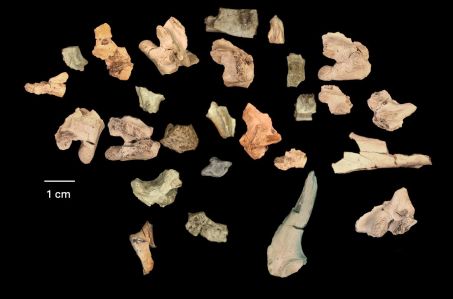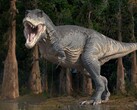A terrifying lizard, worthy of a place in Tolkien's universe, was recently discovered in a museum. Named Bolg amondol, it perfectly illustrates the complexity of biological exchanges between continents during the Cretaceous period.
It was while looking at a jar containing bone fragments in the drawers of the Utah Natural History Museum that Hank Woolley made this strange discovery. He told the journal Royal Society Open Science: "I opened it and immediately saw that it wasn't just a lizard. There was a fragmentary but coherent skeleton. I knew immediately that it was important."
The skeleton, which is partially composed of skull elements, vertebrae, pelvic and scapular girdles, and bone plates, was unearthed in the Kaiparowits Formation. The latter was formed 75 million years ago in Utah.
Measuring about one meter long, Bolg amondol was the size of a desert monitor lizard and was capable of attacking small dinosaurs or eggs for food. Moreover, its appearance is not entirely unfamiliar. It belongs to the group of monstersaurs, which includes the Gila Monster.
As for its name, it probably rings a bell. Hank Woolley adds: "Bolg is a sonorous name, that of a goblin prince in The Hobbit. These lizards have a somewhat monstrous appearance, especially when you look at their skulls.“ The researcher then decided to add the word amondol, which comes straight from the Elvish language created by Tolkien and means ‘mound’ and ”head" respectively, referring to the appearance of the skull of this carnivorous armored lizard.
This discovery provides a better understanding of this extinct species and the family to which it belongs: “The discovery of Bolg completes the fragmentary puzzle of this very ancient and still poorly understood lineage, which spans more than 100 million years.” It must be said that the fossils that were found were simply teeth and small bone fragments. Thus, Bolg amondol provides a more complete picture of this dinosaur: “This allows us to place it more precisely in the evolutionary tree of lizards and compare its features to those of other species, even distant ones.”
But that's not all, because this extinct lizard played a major role in the ecosystem of the Laramidia forests. Three species of giant lizards lived in this strip of land. Finally, the closest ancestor of this animal lived in the Gobi Desert, suggesting that these lizards did not travel using natural bridges between continents in search of a better climate or territory.
Source(s)
Sciences et Avenir (in French), Royal Society Open Science














